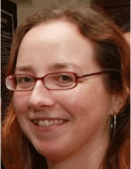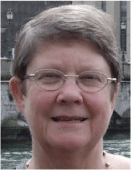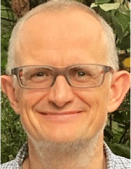Gas sources and concentrations in Surat Basin shallow aquifers: a field sampling method comparison, and isotopic study
J. K. Pearce A B E , S. D. Golding B , P. Hayes A , K. A. Baublys B , H. Hofmann B , S. J. Herbert C and G. Gargiulo DA UQ Centre for Natural Gas, University of Queensland, Brisbane, Qld 4072, Australia.
B School of Earth and Environmental Sciences, University of Queensland, Brisbane, Qld 4072, Australia.
C Arrow Energy, Brisbane, Qld 4000, Australia.
D Terra Sana Consultants, Pine Mountain, Qld 4306, Australia.
E Corresponding author. Email: j.pearce2@uq.edu.au
The APPEA Journal 61(2) 707-713 https://doi.org/10.1071/AJ20061
Accepted: 3 March 2021 Published: 2 July 2021
Abstract
The Surat Basin hosts various industries that extract groundwater including coal seam gas (CSG), feedlots, and agriculture. With water drawdown, gas has been observed in some bores drawing groundwater from different aquifers across the Basin. While methane can occur naturally in aquifers, biogenic CSG has been extracted from the Walloon Coal Measures raising questions on the sources of gas in overlying aquifers. Current standard monitoring uses a direct fill approach to measure dissolved methane concentrations in vials; however, this approach may lose gas present above solubility levels. Water and gas sampling was performed on bores in the Springbok, Gubberamunda, Mooga, Hutton, and Precipice Sandstones, the Orallo Formation, and the Condamine Alluvium. Water bores and CSG production wells from the Walloon Coal Measures were also sampled. We compared direct fill with a closed sampling method for dissolved gas, plus a method for sampling the total free and dissolved gas in the field. Higher dissolved and total methane concentrations were measured using closed sampling methods, especially in gassy bores. The majority of our sampled aquifer gases and waters have stable isotopic signatures distinct from CSG, where methane had likely been formed in situ in shallow aquifers by primary microbial CO2 reduction or fermentation processes. In several gassy bores, the source of the methane could not be clearly identified. This study indicates that (1) current monitoring methods may be underestimating methane concentrations above identified thresholds especially in gassy bores and (2) a combination of isotopic techniques may distinguish methane sources and interaquifer disconnectivity in the majority of cases.
Keywords: methane, Surat Basin, Walloon Coal Measures, Great Artesian Basin, Condamine Alluvium.

Dr Julie Pearce is a geochemist with international experience in the UK, Japan, and Australia on interdisciplinary projects. She is currently a research fellow with the University of Queensland Centre for Natural Gas, and School of Earth and Environmental Sciences. She is an expert on gas–water–rock interactions with a focus on the Surat Basin, Qld, Australia, and geochemical processes in gas and oil shales. She is currently working on field monitoring techniques for measurement of gases and waters, and understanding processes through geochemical and isotopic techniques. She has collaborated in research projects with the gas and CCS (carbon capture and storage) industries, and provided expert opinion to the Queensland Government. |

Suzanne (Sue) Golding is an emeritus professor in the School of Earth and Environmental Sciences at the University of Queensland (UQ), where she conducts research on carbon sequestration and coal seam and shale gas. She has published more than 200 academic articles and book chapters and edited a pioneering text on coal seam gas titled ‘Coalbed Methane: Scientific, Environmental and Economic Evaluation’. She was previously a director of UQ’s Centre for Geoanalytical Mass Spectrometry and has considerable expertise in the application of stable and radiogenic isotope technologies in mineral and hydrocarbon exploration. Previously, she worked in exploration and production in the minerals and coal industries in Australia and South Africa. She holds BSc (Hons) and PhD degrees from the University of Queensland in geology and geochemistry. |

Dr Phil Hayes is a researcher, hydrogeologist, and specialist groundwater modeller with 24 years of experience. He is an associate professor of Water Resources at the University of Queensland (commenced February 2019) where his research interests include the interface between groundwater modelling for impact analysis and reservoir modelling of gas production; the Great Artesian Basin; carbon capture and storage; migration of gas in the shallow subsurface; and geomechanical impacts and ground motion due to groundwater and gas extraction. He has worked in Chile, the UK, and Australia, and he holds a BSc (Hons) in Physics (Manchester, UK) and a PhD in Groundwater Modelling (Birmingham, UK). |

Kim Baublys is the manager of the UQ Stable Isotope Geochemistry Laboratory that provides specialised analyses to the research and industry sectors. She is also completing a PhD at UQ titled ‘Hydrogeological and microbial influence on the geochemical composition of coal seam gases and production waters of the Walloon Subgroup of the Surat Basin, Queensland, Australia’. Research interests include stable and radiogenic isotope techniques to describe large sedimentary basin hydrogeology and hydrogeochemistry. |

Harald Hofmann has a PhD in hydrogeology and is currently a senior lecturer in earth sciences in the School of Earth and Environmental Sciences at the University of Queensland. He has 16 years of experience across industry, government, and the academic sector with a special focus on major ion, stable isotope, and cosmogenic isotope hydrogeochemisty in regional groundwater systems. |

St.John Herbert has more than 30 years of experience in geological and hydrogeological investigations and management in the mining, consulting, and coal seam gas industries working both across Australia and internationally. With a broad management and technical skill set, he has led successful teams in opening new mining plays, delivering environmental assessments and risk management for industrial and resource industries. He has held groundwater roles with Arrow Energy since 2010 including the groundwater modelling and presentation of impact predictions to regulators and the public. He holds a Bachelor of Science degree (Geology Hons) from University of New England and a Master of Science from University of Technology Sydney and is a member of IAH and NGWA. |

Dr Grazia Gargiulo is an environmental consultant with more than 15 years of experience in the field of environmental risk assessment, contaminants hydrology, groundwater and contaminated land investigations, gas risk assessment, and surveys. Her work experience includes international research centers and universities, international consulting firms, and state government agencies. From this experience, she commenced her journey to shape the future of the industry in Australia founding Terra Sana Consultants, an environment, health, and safety consulting firm focus on innovative solutions for the industry, and pursuing an ‘out of the box’ approach to resolve the modern world challenges to protect the environment whilst maintaining business productivity. |
References
Baublys, K. A., Hamilton, S. K., Golding, S. D., Vink, S., and Esterle, J. (2015). Microbial controls on the origin and evolution of coal seam gases and production waters of the Walloon Subgroup; Surat Basin, Australia. International Journal of Coal Geology 147–148, 85–104.| Microbial controls on the origin and evolution of coal seam gases and production waters of the Walloon Subgroup; Surat Basin, Australia.Crossref | GoogleScholarGoogle Scholar |
Bernard, B. B., Brooks, J. M., and Sackett, W. M. (1978). Light hydrocarbons in recent Texas continental shelf and slope sediments. Journal of Geophysical Research: Oceans 83, 4053–4061.
| Light hydrocarbons in recent Texas continental shelf and slope sediments.Crossref | GoogleScholarGoogle Scholar |
Cahill, A. G., Beckie, R., Ladd, B., Sandl, E., Goetz, M., Chao, J., Soares, J., Manning, C., Chopra, C., Finke, N., Hawthorne, I., Black, A., Ulrich Mayer, K., Crowe, S., Cary, T., Lauer, R., Mayer, B., Allen, A., Kirste, D., and Welch, L. (2019). Advancing knowledge of gas migration and fugitive gas from energy wells in northeast British Columbia, Canada. Greenhouse Gases: Science and Technology 9, 134–151.
| Advancing knowledge of gas migration and fugitive gas from energy wells in northeast British Columbia, Canada.Crossref | GoogleScholarGoogle Scholar |
Hamilton, S. K., Golding, S. D., Baublys, K. A., and Esterle, J. S. (2014). Stable isotopic and molecular composition of desorbed coal seam gases from the Walloon Subgroup, eastern Surat Basin, Australia. International Journal of Coal Geology 122, 21–36.
| Stable isotopic and molecular composition of desorbed coal seam gases from the Walloon Subgroup, eastern Surat Basin, Australia.Crossref | GoogleScholarGoogle Scholar |
Hamilton, S. K., Golding, S. D., Esterle, J. S., Baublys, K. A., and Ruyobya, B. B. (2020). Controls on gas domains and production behaviour in a high-rank CSG reservoir: insights from molecular and isotopic chemistry of co-produced waters and gases from the Bowen Basin, Australia. Geosciences 10, 74.
| Controls on gas domains and production behaviour in a high-rank CSG reservoir: insights from molecular and isotopic chemistry of co-produced waters and gases from the Bowen Basin, Australia.Crossref | GoogleScholarGoogle Scholar |
Loomer, D. B., MacQuarrie, K. T. B., Al, T. A., Bragdon, I. K., and Loomer, H. A. (2018). Temporal variability of dissolved methane and inorganic water chemistry in private well water in New Brunswick, Canada. Applied Geochemistry 94, 53–66.
| Temporal variability of dissolved methane and inorganic water chemistry in private well water in New Brunswick, Canada.Crossref | GoogleScholarGoogle Scholar |
Milkov, A. V., and Etiope, G. (2018). Revised genetic diagrams for natural gases based on a global dataset of >20,000 samples. Organic Geochemistry 125, 109–120.
| Revised genetic diagrams for natural gases based on a global dataset of >20,000 samples.Crossref | GoogleScholarGoogle Scholar |
OGIA (2019). Underground water impact report for the Surat Cumulative Management Area. Office of Groundwater impact assessment. Department of Natural Resources, Mines and Energy.


